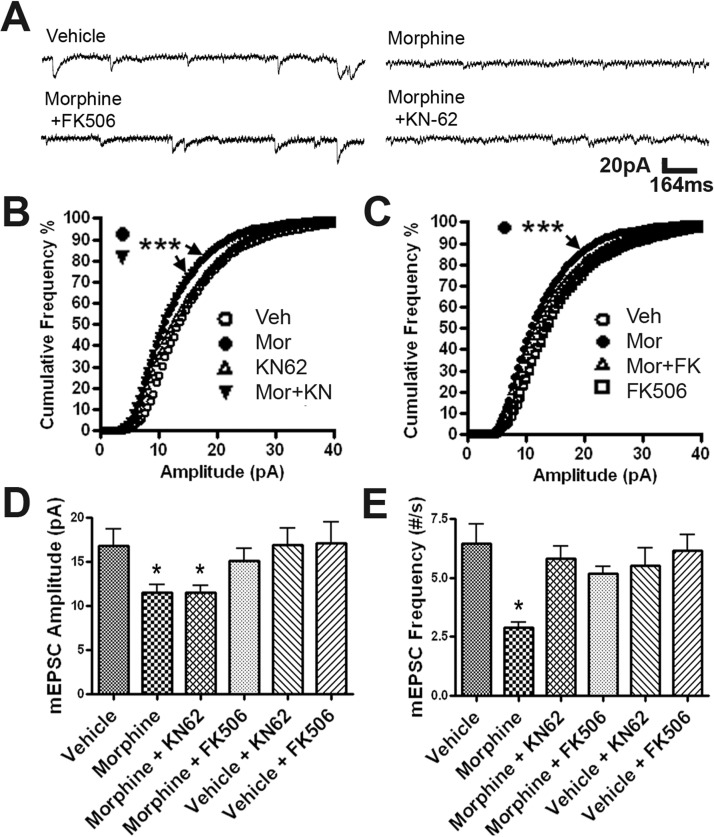Fig. 7.
Calcineurin inhibition, but not CaMKII inhibition, blocks the morphine-induced decrease in the amplitude of AMPA receptor-mediated mEPSC responses. A, representative traces of mEPSC recordings in neurons with four different treatments. Scale bar, x-axis, 164 ms; y-axis, 20 pA. B, cumulative frequency graph of mEPSC amplitude of neurons treated with vehicle (Veh), morphine (Mor), KN-62, and morphine plus KN-62 (Mor+KN). Neurons treated with morphine and morphine plus KN-62 have significantly more small amplitude mEPSCs than neurons treated with vehicle. Kolmogorov-Smirnov test between vehicle and morphine, between vehicle and morphine plus KN-62, p < 0.0001. C, cumulative frequency graph of mEPSC amplitude of neurons treated with vehicle, morphine, morphine plus FK506, and vehicle plus FK506. Neurons treated with morphine were found to be significantly different from vehicle. Kolmogorov-Smirnov test between vehicle and morphine, p < 0.0001. D, average mEPSC amplitudes of each group. The mEPSC amplitude of neurons treated with morphine or morphine plus KN-62 was significantly decreased compared with that for vehicle. E, Average mEPSC frequencies of each group. The mEPSC frequency of neurons treated with morphine was significantly decreased compared with that for vehicle. One-way ANOVA, Bonferroni post-test: *, p < 0.05; ***, p < 0.001; n = 10 neurons/group.

